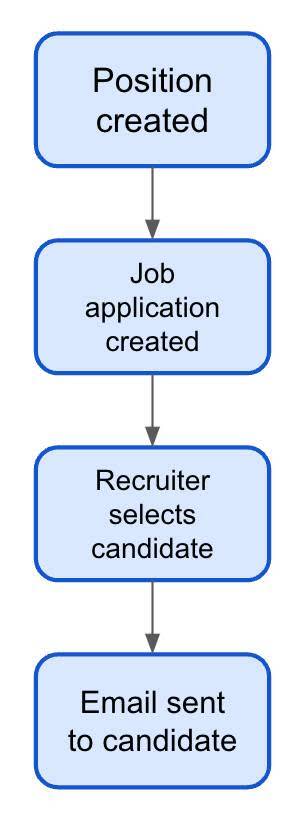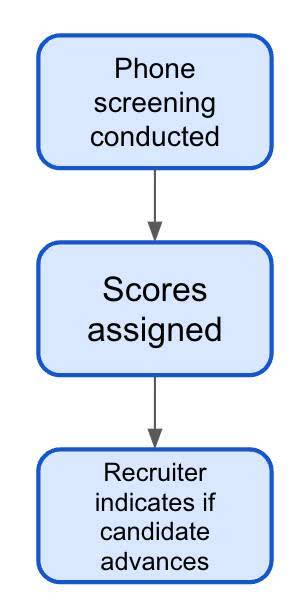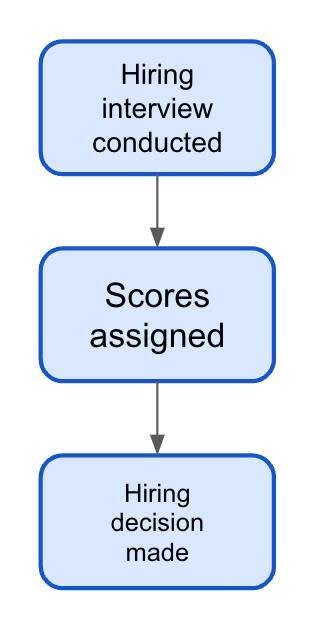Plan an Orchestration
Learning Objectives
After completing this unit, you’ll be able to:
- Plan your own business use for Flow Orchestration.
- List several design considerations for Flow Orchestration.
Follow Along with Trail Together
Want to follow along with an expert as you work through this step? Take a look at this video, part of the Trail Together series.
(This clip starts at the 6:55 minute mark, in case you want to rewind and watch the beginning of the step again.)
Where to Begin
So you’ve identified a business use for Flow Orchestration. Before you begin to build it in Flow Builder, it’s important to plan it out. It’s easier to automate a business process with an orchestration when you understand every detail. This is especially true for the individual flows required to complete each step, as steps and stages rely on flows to run.
First, visualize your entire end-to-end process. Create a flowchart of the parts you want to automate. That way you can identify the required actions without missing a step. This visualization helps you to identify which flows you want to create in Flow Builder and which automation needs assistance from third-party systems. You can pinpoint which actions should occur in the background and which need user input.
Design Considerations
What are the design considerations when planning an orchestration? Here are some questions to ask as you visualize your process.
- What are all the ways your process may start and end?
- Who are the users or groups, and what are their roles in the process?
- What tasks are assigned to what roles?
- Do some steps only execute some of the time?
- Do you need to pause and resume the process?
- Can you use entry conditions or other optimizations to reduce unnecessary operations?
- Consider maintenance and change management: Who is responsible for this business process, and what’s the likelihood of change or iteration?
- Analyze your existing flows to see if you can incorporate them into your orchestration.
Automate a Candidate Recruitment Process
Let’s look at a specific use case. Ursa Major Solar wants to use Flow Orchestration to coordinate their new candidate recruitment process. This process automates the cycle from the initial recruiter screening through to the employment offer decision.
Remember our considerations. What are all the ways this process may start and end? The process starts when a new job application is created by the HR recruiter. It ends with the hiring manager determining either a rejection or a hiring decision. Do some steps only execute some of the time? Yes, there are different steps for a candidate who is advancing versus one that is rejected.
Create the Flowchart
As stated earlier, it’s useful to visualize your entire end-to-end process. So let’s look at this process and create a flowchart.
In order to begin the recruitment process:
- A new position is created.
- A job application for the position is created.
- The recruiter selects the candidate to be interviewed for the job.
- An email is sent to the candidate, informing them of the phone screen.

Once a candidate is selected, here are the next steps.
- The candidate screening is conducted.
- The recruiter fills out a form via a screen, assessing the candidate on a number of skills. The candidate receives a score from 1 through 5.
- The recruiter indicates if the candidate advances or is rejected based on the set criteria.

Now it’s decision time. What are the criteria and potential outcomes?
- The candidate advances to the hiring manager interview if their overall score from the initial screening is greater than or equal to 3.
- An email is sent to the successful candidate to schedule an interview with the hiring manager.
- If the candidate is rejected, an auto-generated email is sent informing them their application won’t advance in the hiring process.

Lastly, it's time for the hiring manager to conduct the final interview.
- The interview is conducted.
- The manager gives their feedback by assigning a score.
- When the rating is submitted, the decision is made. Does the manager want to recommend this candidate for hire?

Now that all of the pieces are documented, consider if there are tasks that can be combined in a single flow. What will your steps and stages look like?
Next we discuss identifying the steps and stages and creating the flows required to run this orchestration.
Resources